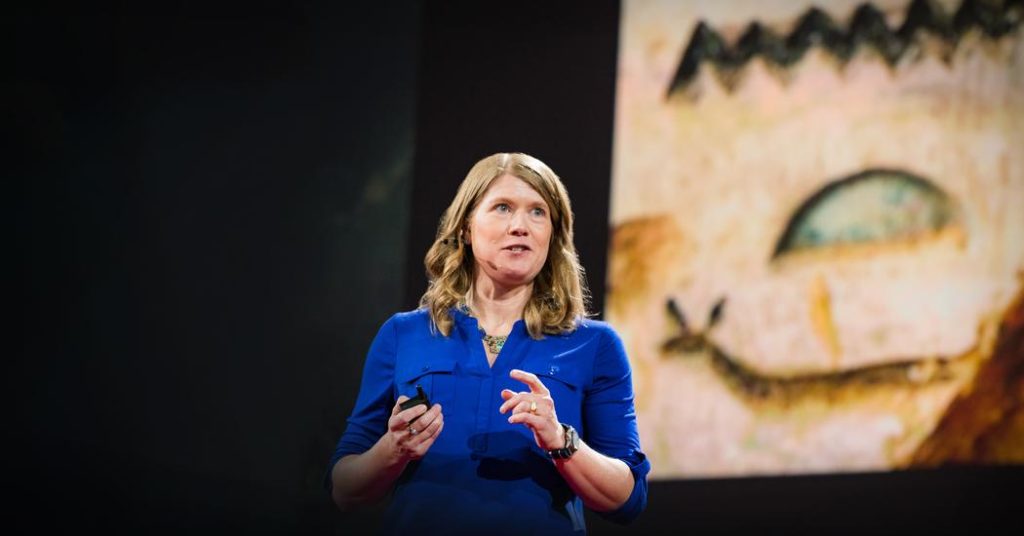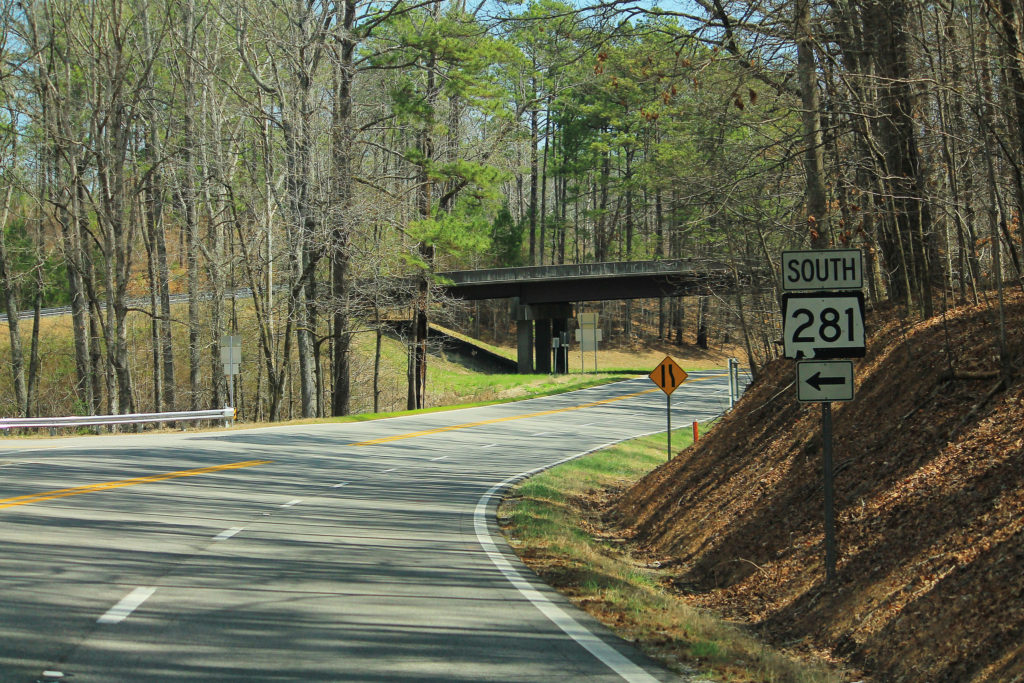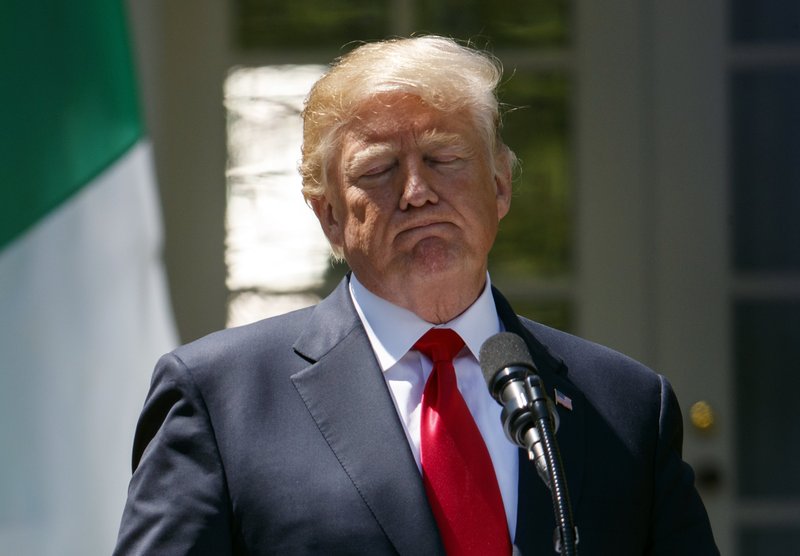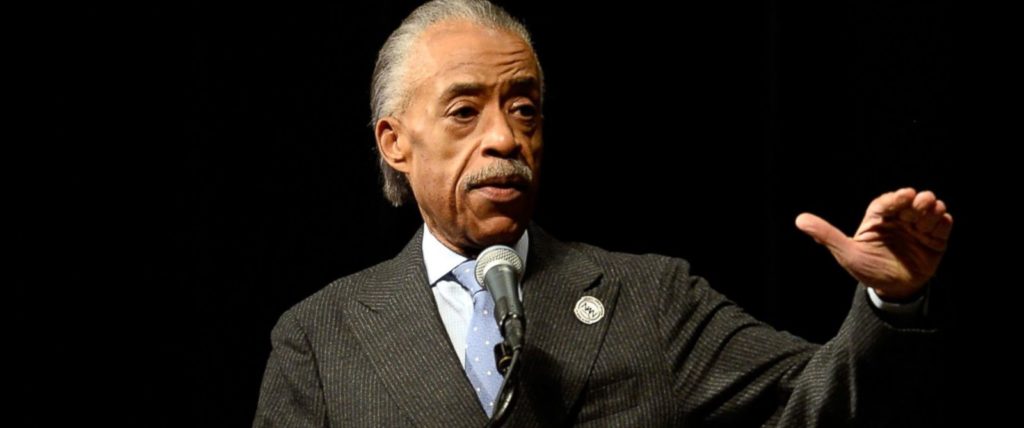National Day of Prayer events scheduled across Alabama

The 67th Annual National Day of Prayer will be observed Thursday. Across the country and the Yellowhammer State, people will unite in prayer for their community and country. Over 50 prayer gatherings will take place across Alabama. In addition to the events taking place across the state, more than 35,000 prayer gatherings will be conducted by about 40,000 volunteers across the country. The National Day of Prayer originated in 1952 after Congress passed a joint resolution and President Harry Truman signed a bill to establish an official celebration. In 1988, President Ronald Reagan designated the first Thursday of May as the annual observance for the National Day of Prayer, inviting people of all faiths to pray for the nation. According to its website, the day “exists to communicate with every individual the need for personal repentance and prayer, to create appropriate materials, and to mobilize the Christian community to intercede for America’s leaders and its families.” The theme for this year’s observance is ‘Pray for America – UNITY’ — based upon Ephesians 4:3 which reads, “Making every effort to keep the unity of the spirit through the bond of peace.” “We hope that you will join us in prayer and reflection this week for our nation and state. We will be praying for a renewed birth of spiritual awaking in our nation collectively and individually,” said the Eagle Forum of Alabama, which will join in celebrations across the state.
Pew study shows Alabama economy slow to rebound after recession

A new study titled Fiscal 50 by the Pew Charitable Trusts, shows that Alabama has one of the slowest economies to rebound after the recession a decade ago. Growth has been uneven throughout the U.S. with North Dakota being the fastest growing, and Connecticut being the slowest. Alabama was shown as being one of the slowest with an annual growth of only .9 percent since the recession in 2007. The study used personal income estimates, and tax revenue data to track economic trends within each state. Personal income growth, one of the main resources for tax revenue growth, has been lagging at a historical pace. From 2007 to 2017 it only rose 1.6 percent a year, compared with the 2.6 percent a year over the past 30 years. “Personal income growth has been uneven over the past decade, tumbling in almost all states in 2009, during the depths of the recession, and falling in most states in 2013 after taxpayers shifted income to avoid a potential federal tax hike. Sluggish growth in 2016 and 2017 reflected personal income drops in a number of states,” said the study. States in the nation have experienced sluggish growth across the board, with little to no extra tax revenue leaving many states with very little wiggle room in their budget, and some states have not experienced a rebound since the recession at all. “Nationally, total state tax revenue recovered in mid-2013 from its plunge during the recession but has rebounded more slowly than after the three previous downturns.” The good news is, nationally, all three major components of personal income; work earnings, transfers (like Social Security benefits), and property income have have risen over the past 10 years, with the effects varying from state to state.
Women of Influence: UAB space archeoligist Sarah Parcak

“Sharing knowledge is the greatest of all callings. There’s nothing like it in the land.” University of Alabama at Birmingham (UAB) professor of anthropology Sarah Parcak told this ancient Egyptian quote to a crowd of listeners during a 2012 TED talk (which has since been viewed over 1 million times) on her work to detect hidden archaeological sites with satellites and Infra-red technology, also known as “space archeology,” and Parcak does just that. Parcak was born in Bangor, Maine, earned her bachelor’s degree in near Eastern languages and civilizations at Yale University in 2001, and her Master’s and Ph.D in Egyptian archaeology from Trinity College at Cambridge. From there, she taught Egyptian art and history at the University of Wales in Swansea before moving to Birmingham to work at UAB, where she founded the Laboratory for Global Observation. Parcak has since directed multiple surveys and excavation projects from the Sinai Peninsula, and the Nile’s East Delta to Romania, Nabetaea, Tunisia and Italy. Her work has been featured in three documentaries, the 2011 documentary Egypt: What Lies Beneath, the 2012 documentary Rome’s Lost Empire and Vikings Unearthed. Parcak’s team of archaeologists at UAB has claimed the discovery of 17 pyramids, more than 1,000 tombs and 3,000 settlements in the vicinity of Sa el-HagarIn, and in 2015 she collaborated on the identification of a possible Norse settlement in Newfoundland. But the spotlight really hit her in 2016 when she won the 2016 TED prize, a coveted prize of $1 million, which she used to fund the Global Xplorer platform; a web-based platform designed to “revolutionize how modern archaeology is done altogether, by creating a global network of citizen explorers.” The first goal of Global Xplorer is to map out the entire country Peru — the home of Machu Picchu, the Nazca lines and other archaeological wonders waiting to be discovered. “We will do nothing less than use state-of-the-art technology to map an entire country,” said Parcak at the TED Summit in 2016. “This is a dream started by Hiram Bingham, but we are expanding it to the world, making archaeological exploration more open, inclusive, and at a scale simply not previously possible.” One of Parcaks goals is to preserve the history, and save sites in the middle-east from looters, “the past few years have been horrific for archaeology. I’ve spent a lot of time, as have many of my colleagues, looking at the destruction,” Parcak said when she accepted the TED prize in 2016. “This Prize is not about me. It’s about our field. It’s about the thousands of men and women around the world, particularly in the Middle East, who are defending and protecting sites.” She has been selected for many top honors including being named on of the 100 Leading Global Thinkers by Foreign Policy magazine, and is also a National Geographic Society Archaeology Fellow, Fellow of the Society of Antiquaries, and a 2013 TED Senior Fellow. Parcak’s work has led to many discoveries and excavated an abundant amount of historical sites otherwise lost to the modern world, she is also bringing together “citizen scientists” from around the globe to learn, and work together to open windows to the past for our modern world. For her service to our world, the students at the University of Alabama, and for her relentless pursuit of unearthing the past for our modern eyes, Sarah Parcak is doubtlessly an Alabama woman of influence.
You bought it, they lost/stole it; $745k in state property unaccounted for in 2017

Alabama’s government is not keeping good track of the various items state agencies have purchased using hard-earned taxpayer dollars. According to Alabama’s 2017 Annual Loss Report state agencies were unable to account for a whopping $745,759.50 last year. Compiled by State Auditor Jim Zeigler — whose office is tasked with providing accountability to the taxpayers of Alabama by maintaining accurate records of all personal property valued at $500 and above by conducting property and equipment audits for agencies statewide — the report reveals 282 items were lost in 2017 alone. That said, all property shown as lost on the report may not be due to neglect. According to the auditor’s office, property reported lost includes property lost, property destroyed by natural causes (such as fire) and property stolen that has been reported to the local law enforcement authorities. Legally, it is not the responsibility of the auditor to locate lost property and equipment of state agencies, but to report it to the proper authorities including the Governor, Attorney General, Legislature, Agency Directors and to provide the information to members of the media and the general public. Biggest losers Topping the list of agencies that lost the most last year was overwhelmingly the Alabama Law Enforcement Association (ALEA), which lost a total of $148,864.66 including two fingerprint capture stations that cost taxpayers $21,600 a piece. Alabama’s Department of Conservation is certainly not conserving funds. The department lost 15 items years totaling $75,565.55. The reason for the inflated number? Two vehicles were totaled, which cost the agency $49,387.11. The Department of Conservation-Parks was right behind it’s parent agency with even more items lost — 47, worth $56,251.26. Among their lost items was $4,768 worth of clothes that were destroyed when a park employee “accidentally disposed” of an inoperable washing machine and dryer. They also lost another $9,835.94 worth of computers. The auditor’s office believes these agencies, and others where they found losses, are not being good stewards of taxpayer dollars. “State Agencies are not being good stewards of taxpayer dollars,” Zeigler told Alabama Today “While overall losses of state property of one percent are below the national average of about 1.5 percent, the list of losses of each agency appears to include avoidable losses. Some of the things lost would almost sound funny if this were not our tax dollars — a golf car, a truck, 140 tasers. Best stewards of taxpayer dollars Of the agencies which lost items in 2017, overwhelmingly the Examiners of Public Accounts lost the least. They lost a 500GB hard drive worth $53.96. The Office of Voter Registration was unable to locate an IBM monitor during the audit, which cost the agency $229.40. Beyond all control As the auditor’s office pointed out, some losses were beyond the control of the given agencies. For example the ABC Board lost 13 items totaling $17,252.70 due to a tornado. While other agencies lost some items due to fires. Holding agencies accountable According to Zeigler, all his office can do is report the loss. “Once my auditors complete an audit that shows losses, I lose jurisdiction. I am required to turn the audit report over to the Alabama Attorney General,” Zeigler explained. “The enforcement of the audit cannot be done by the auditor’s office but must depend on the AG. I am sad to report that during the two years I served with former Attorney General Luther Strange, not one piece of missing property was ever recompsensed by the AG. Not one person was ever held accountable.” Solutions for the future Zeigler is working on a bill that will transfer authority to enforce state audits from the AG to the State Auditor, to avoid similar situations in the future. He says that’s how it is done in Mississippi where their state auditor is legally allowed to take legal action to enforce his own audits. Zeigler says his office is now installing a high-tech audit system called Radio Frequency Identification (RFID) which will allow for an easier auditing process in the future. “It will allow my auditors to do the audits more quickly and more often It will also allow them to actually find the missing item using a chip embedded in each item,” said Zeigler. “It will take us another year and a half to have RFID operative. Our goal is to lower losses to as close to absolute zero as humanly possible. 2017 agency loss overview Agency Quantity Acquisition Cost Depreciated Value Alabama Law Enforcement Agency 21 $148,864.66 $22,766.64 Department of Conservation 15 $75,565.55 $34,800.99 Department of Conservation-Parks 47 $56,251.26 $7,998.41 Department of Transportation-State General 23 $53,445.30 $24,707.93 Insurance Department 3 $47,564.00 $22,378.00 Office of Prosecution Services 4 $43,902.00 $4,521.90 Department of Education 26 $33,913.79 $4,904.08 State Board for General Contractor 1 $30,837.20 $24,669.76 Historical Commission 3 $27,992.00 $2,851.70 Board of Pardons and Paroles 31 $23,927.74 $2,893.83 Alabama Forestry Commission 6 $23,717.03 $19,966.30 Department of Corrections 5 $23,339.09 $2,578.72 Alabama Onsite Wastewater Board 1 $23,055.00 $18,444.00 Department of Transportation-State Truck 1 $22,618.00 $13,570.80 HAVA/New oter Registration 12 $17,871.22 $1,787.12 ABC Board 13 $17,252.70 $10,142.99 Alabama Historic Ironworks Commission 15 $14,763.65 $1,476.37 Alabama Space & Rocket Center 9 $11,444.13 $2,046.91 Department of Transportation-Highway Dept 14 $11,129.45 $5,180.69 Finance Telecommunications Inventory 5 $5,846.73 $1,230.40 School of Fine Arts 3 $5,277.00 $906.70 Department of Revenue 4 $4,345.24 $3,431.32 Alabama State Port Authority 3 $4,312.39 $924.57 Department of Forensic Sciences 3 $3,856.50 $594.40 Agriculture & Industries 2 $3,489.62 $2,583.52 Youth Services 2 $2,810.60 $427.56 Alabama Dept. of Environmental Management 1 $1,914.79 $1,340.35 Banking Department 1 $1,758.00 $1,054.80 Department of Human Resources 2 $1,604.00 $1,144.10 Alabama Tourism Department 2 $1,559.95 $950.69 Board of Medical Examiners 1 $787.55 $630.04 Medicaid Agency 1 $460.00 $0.10 Office of Voter Registration 1 $229.40 $22.94 Examiners of Public Accounts 1 $53.96 $37.77 TOTALS 282 $745,759.50 $242,966.40
Annual Supreme Court guessing game: Will Anthony Kennedy stay or go?

Justice Anthony Kennedy has his law clerks lined up for next year. He plans to teach in Salzburg, Austria, in July, as he has done almost every summer for more than two decades. In short, there are no outward signs that the 81-year-old justice is in his final months on the Supreme Court. So why are liberals in a state of heightened anxiety that Kennedy might leave? And why are some conservatives hopeful that, appearances aside, Kennedy could step down after more than 30 years on the high court? Because if he goes, President Donald Trump gets to nominate his successor, whom a slim Republican Senate majority is likely to confirm. The replacement justice would be more conservative than Kennedy and the right would have a solid working majority of the nine justices. The speculation reflects the darkest fears and fondest wishes of people who care about the court on both sides of the political spectrum. As the justice closest to the middle on an otherwise starkly divided court, Kennedy controls the outcome of a disproportionate share of big-ticket cases. That divide allows Kennedy to decide how far to the right or left the court moves on a range of issues, including abortion, gun rights, capital punishment, affirmative action, and voting rights. Filling the vacancy could be as contentious as it was when Justice Lewis Powell, Kennedy’s predecessor, retired in 1987 and President Ronald Reagan settled on Kennedy only after his first two choices for the seat failed, said David Yalof, chairman of political science at the University of Connecticut. “The difference is that in 1987 you had a Democratic Senate face off against a Republican president in his final two years in office. Here, you have a Republican Senate and a Republican president in his first two years in office,” Yalof said. The concern among liberals is palpable. Kennedy is nearly 82 and the average retirement age of the last 15 justices who retired is just over 77 years. That includes John Paul Stevens, who was 90 when he retired in 2010 and 58-year-old Abe Fortas, who left the court amid revelations of financial improprieties in 1969. If Kennedy were to announce his retirement this spring, it would inject the court into the middle of the midterm congressional elections and put his “critical fifth vote in the hands of perhaps the least competent president in modern history to manage and value it,” said Elizabeth Wydra, president of the liberal Constitutional Accountability Center. The New York Times editorial board penned an open letter to Kennedy on Sunday, imploring him to hang on. “How can we put this the right way? Please don’t go,” it said. The two older justices, Ruth Bader Ginsburg, 85, and Stephen Breyer, 79, are Democratic appointees who are unlikely to go anywhere during a Trump administration if they can help it. The pleas for Kennedy to stay come in a term when he could side with conservative justices to erode the power of labor unions for government workers, give the upper hand to employers who want to prevent workers from banding together to complain about pay and workplace conditions, side with Texas in a dispute over electoral districts that were struck down by a lower court for being discriminating against black and Hispanic voters, limit state efforts to regulate anti-abortion pregnancy centers and uphold Trump’s ban on travel from several majority Muslim countries. Kennedy’s vote also is likely to be decisive in two other high-profile issues, a Colorado baker’s objection to creating a wedding cake for a same-sex couple and efforts to rein in the drawing of electoral districts for partisan gain. A retirement announcement could come at any time, and perhaps sooner rather than later if Kennedy is interested in the relatively quick and smooth confirmation of the next justice. Stevens and Justice David Souter, the last two retirees, revealed their intentions in April 2010 and May 2009, respectively. That enabled President Barack Obama to announce his choices in time for final Senate action by early August. By contrast, in 1987, Powell waited until late June to say he was retiring. When the Senate voted down Robert Bork, Reagan’s first choice, and Douglas Ginsburg withdrew as Reagan’s second pick, the court began its next term with just eight justices on the bench. Kennedy, Reagan’s third choice, did not join them until February 1988. The timing of his announcement also might influence the effective date of his retirement. The soonest Kennedy would leave is at the end of June, after all the court’s current cases have been decided. Some justices step down immediately. Others stay until their successor is confirmed, sometimes reflecting a worry that the court might start its term short-staffed. Those concerns probably are not very serious at the moment because Republicans have every incentive and few procedural impediments to confirming a new justice. “I think it will be very difficult to defeat any Trump nominee for that seat unless of course there are character issues or that sort of thing,” said Richard Arenberg, a longtime Democratic Senate aide who now teaches political science at Brown University. They probably would not want to chance waiting for the election results and the possibility of losing control of the Senate. Even in that circumstance, however, Senate Majority Leader Mitch McConnell still could push for a confirmation between the election and the start of the next Congress in January, Yalof said. But if Kennedy decides to serve another a year or two and Democrats win the Senate in November, it could be considerably harder for Trump to get a nominee confirmed, especially since McConnell refused to act on Merrick Garland’s nomination in the last year of Obama’s presidency. Republished with the permission of the Associated Press.
Is Donald Trump right about judges’ leanings? Maybe, review shows

President Donald Trump has called courts unfair and political and repeatedly assailed the 9th Circuit, the U.S. court system’s westernmost division, where some of his key immigration policies have stalled. Other observers describe America’s judges as conservative or liberal, implying they bring an ideology to their decision-making that goes beyond a careful assessment of law and precedent. That view has made the U.S. Senate’s confirmation of federal judges fraught, with each party battling to block nominees they view as unsympathetic to their positions. But is there any evidence politics plays a role in judicial opinions? An Associated Press review suggests it might. The AP looked at opinions by nearly 40 federal district court and appellate judges about Trump’s ban on travelers from mostly Muslim countries. It found only one judge nominated by a Democratic president has supported Trump’s authority to keep out all travelers or deport those who arrived just as the first ban took effect. With some exceptions, Republican nominees have taken a broader view of presidential power and rejected limits on the executive orders. The travel ban is now in its third iteration and under consideration by the U.S. Supreme Court. HOW HAS THIS SPLIT PLAYED OUT IN THE COURTS? One of the first federal judges to consider the ban gave it the all-clear, saying Trump provided a legitimate reason for his January 2017 executive order and that a lawsuit challenging it was likely to fail. The decision by U.S. District Judge Nathaniel Gorton in Boston came days after a federal judge in Los Angeles, Andre Birotte, reached the opposite conclusion and ordered the administration to allow immigrants with valid visas into the U.S. The judges considered different lawsuits in different courts 3,000 miles (4,830 kilometers) apart. But they were also nominated to the bench by presidents from different parties — Gorton by Republican George H.W. Bush and Birotte by Democrat Barack Obama. For the most part, the judicial split along party lines has continued as the ban’s various versions have made their way through federal courts. The three bans have had a tortuous legal journey that has taken them before dozens of district court and appellate judges nominated by presidents from both major parties. The AP completed an extensive review of that journey, examining 26 decisions by 38 judges. The two key findings: — A majority of the judges — 24 — were nominated by Democratic presidents. Only one of those judges supported Trump’s power to block all travelers. In February, 4th U.S. Circuit Court of Appeals Judge William Traxler, nominated by President Bill Clinton, said in a dissenting opinion that the administration provided “logical conclusions and rationale” for the third ban and addressed his earlier concerns that it was motivated by anti-Muslim bias. — In contrast, 10 of the 14 Republican judges in the group sided with the administration and moved to uphold restrictions on foreign travelers. One of the notable exceptions is James Robart in Seattle — a nominee of President George W. Bush —, who issued a nationwide order blocking the first ban. AREN’T JUDGES SUPPOSED TO BE APOLITICAL? The code of conduct for federal judges says they should not allow “family, social, political, financial or other relationships to influence” their judgment. Judges generally refrain from overt partisanship and often hold themselves up as neutral arbiters of law. But the law can be unclear and open to varying interpretations. In a widely cited 2006 book, “Are Judges Political,” Harvard University’s Cass Sunstein and other researchers studied thousands of decisions by three-judge federal appellate court panels. Some areas of the law — such as appeals of criminal convictions — produced no significant difference in the decisions of Republican and Democratic judicial nominees. But in other areas, political affiliations were good predictors of judges’ rulings. Affirmative action and environmental regulations were among the issues on which Republican nominees were more likely to take a conservative view, while their Democratic counterparts were more likely to go in a liberal direction, the researchers found. “The reality is, there are certain hot button issues where you’ve got these splits, and there’s not that many people in the middle,” said David Levine, a professor at the University of California, Hastings College of the Law who has followed the travel ban cases. WHERE DO REPUBLICAN AND DEMOCRATIC NOMINEES DIFFER ON THE TRAVEL BAN? Democratic nominees have pointed to the president’s campaign rhetoric about barring Muslims from entering the country as evidence the bans are illegally motivated by religious prejudice. They said the administration provided insufficient evidence for its claim that the bans are needed for U.S. security. “The ‘initial’ announcement of the Muslim ban, offered repeatedly and explicitly through President Trump’s own statements, forcefully and persuasively expressed his purpose in unequivocal terms,” U.S. District Judge Theodore Chuang in Maryland, who was nominated by Obama, said in an October ruling blocking the third ban. Republican judicial nominees have assailed their Democratic counterparts for second-guessing the president’s national security claims by looking beyond his order to campaign statements. “Even if we have questions about the basis for the President’s ultimate findings — whether it was a ‘Muslim ban’ or something else — we do not get to peek behind the curtain,” 9th U.S. Circuit Court of Appeals Judge Jay Bybee, a President George W. Bush nominee, said in March 2017. Bybee was dissenting from the 9th Circuit’s decision not to revisit its ruling keeping the first travel ban on hold. Four other judges — all Republican nominees — signed the dissent. WHAT’S NEXT? The U.S. Supreme Court will have the final word. It heard arguments April 25 about the ban’s latest version, which restricts travel to the United States by residents of five majority-Muslim countries — down from seven in the first ban — as well as North Korea. It also restricts travelers from Venezuela. The justices in December allowed that version to take full effect even as the legal fight over it continued. They appeared split during the hearing, though it
Fed set to leave rates alone amid signs of rising inflation

The Federal Reserve achieved an inflation milestone this week, but that isn’t likely to alter expectations for what the Fed will announce when its latest policy meeting ends Wednesday. After six years of mostly missing its annual 2 percent target for inflation, the Fed learned Monday that its preferred gauge of consumer inflation had reached a year-over-year pace of 2 percent. And in the coming months, inflation is widely expected to stay around that level. The debate the Fed is now likely to have is whether it should accept a period in which inflation rises above 2 percent without accelerating its pace of rate increases. But for now, a rate increase is considered unlikely. In a statement it will issue Wednesday afternoon, the Fed is expected to leave its benchmark rate unchanged at a still-low level of 1.5 percent to 1.75 percent. Solid economic growth, low unemployment and evidence of inflation pressures, though, are expected to keep the central bank on a path of gradual rate hikes the rest of the year. Most Fed watchers foresee either two or three additional increases in the Fed’s key rate by year’s end, coming after an earlier hike in January. The central bank is meeting as its board is undergoing a makeover, with a raft of new appointees by President Donald Trump who appear generally supportive of the Fed’s cautious approach to rates since the Great Recession ended. Despite Trump’s complaints during the presidential race that the Fed was aiding Democrats in keeping rates ultra-low under President Barack Obama, his choices for a chairman and for other slots on the Fed’s board have been moderates rather than hard-core conservatives who would favor a faster tightening of credit. “The Trump Fed could have been a much more hawkish Fed but so far, these choices are pretty middle-of-the road,” said Diane Swonk, chief economist at Grant Thornton in Chicago. As Jerome Powell, Trump’s hand-picked new Fed chairman, said at a news conference after the central bank’s most recent meeting in March, “We’re trying to take the middle ground, and the committee continues to believe that the middle ground consists of further gradual increases in the federal-funds rate.” Bond investors are signaling that they expect a pickup in U.S. inflation, having bid up the yield on the 10-year Treasury note last week above 3 percent before the yield settled just below that by week’s end. A year ago, the 10-year yield was just 2.3 percent. Under Powell’s predecessors, Janet Yellen and Ben Bernanke, the Fed’s board endured criticism from House Republicans over its decision to pursue a bond purchase program designed to lower long-term borrowing rates and to leave its key rate at a record low near zero for seven years. The critics charged that those policies would eventually produce destructive bubbles in the prices of stocks and other assets and, eventually, undesirably high inflation. But so far, Trump’s reshaping of the Fed’s board reflects a generally status quo approach. “Trump’s criticisms during the campaign have not been borne out by his decisions on who to put on the Fed,” said Mark Zandi, chief economist at Moody’s Analytics. Since the Fed began raising rates in December 2015, the pace has been modest and gradual: One quarter-point rate increase in 2015, one in 2016, three in 2017 and one so far this year. When the Fed announced its most recent rate hike in March, it forecast that it would raise rates twice more this year. But some economists think that the Fed will respond to the increased government stimulus in the form of tax cuts and higher spending to accelerate the rate hikes slightly from three to four this year. Congress in December passed a $1.5 trillion tax cut that took effect in January. And then in February, it approved $300 billion more in government spending for this year and next year. That stimulus, coming at a time when unemployment is at a 17-year low of 4.1 percent, could raise the threat of higher inflation. Yet even against this backdrop, the prevailing view is that the Trump-shaped Fed will remain cautious about rate increases. “The central bank does not want to make the mistakes made in the past when the Fed raised rates too high, too fast and became the No. 1 cause of a recession,” said Sung Won Sohn, an economics professor at California State University, Channel Islands. Republished with the permission of the Associated Press.
Walt Maddox unveils infrastructure plan for Alabama’s crumbling roads, bridges

Tuscaloosa Mayor and gubernatorial hopeful, Democrat Walt Maddox unveiled his strategic plan for rebuilding the state’s infrastructure on Wednesday. “Roads and bridges carry much more than just families in cars and cargo in trucks, they are the pathways for the economic engines that support job and wage growth,” Maddox said on his website. “Unfortunately, Alabama bridges receive a grade of C- from the American Society of Civil Engineers, and our roads earn a dismal D+. These embarrassing grades mean that 20% of Alabama’s bridges are in urgent need of improvement and our roads rate as ‘poor & at risk.’” According to Maddox, every Alabama driver pays over $320 per year in extra vehicle operating costs due to deficient roads. And the average household loses $3,400 per year in economic opportunities due to our deteriorating transportation infrastructure, a number expected to grow to more than $5,000 annually by 2025. “Corporate executives rank highway accessibility as the number two factor in site selection. Manufacturing plants, industrial facilities, and large commercial operations simply won’t locate in areas that have poor roads and bridges because it puts their businesses at risk,” Maddox explained. “Almost one million full-time jobs in Alabama’s key industries, such as tourism, trucking, retail sales, agriculture, and manufacturing, are completely dependent on the transportation network. For every dollar invested in roads and bridges, we see a return on investment of $5.20 in reduced maintenance costs, fewer delays, lower fuel consumption, improved safety, and reduced emissions. When we add the economic benefit of more jobs, increased wages, and reduced road replacement costs in the future, that benefit jumps to as high as $14 returned for each dollar spent.” Which is why he’s called for investment in a plan created by the Alliance for Alabama’s Infrastructure — a grassroots advocacy coalition that promotes financially-responsible investment in Alabama’s roads and infrastructure — to fix Alabama’s “crumbling roads and bridges.” “The Alliance for Alabama’s Infrastructure has long advocated for addressing this crisis by identifying financially responsible investments, reforms, and long-term solutions. Their common sense approach to facing the truth and acting on the facts provides a blueprint to get Alabama out of the potholes we’ve dug for ourselves,” said Maddox. “I support the Alliance’s plan to address Alabama’s critical infrastructure needs. That means we have to face the truth about Alabama’s infrastructure funding, but a vast majority of Alabamians, when educated about the facts, agree that the Alliance for Alabama’s Infrastructure plan will pay dividends to the entire state.” Alabama currently has one of the lowest gas taxes in the country, but the state also has some of the worst roads in the country. “You get what you pay for,” explained Chip Hill, Maddox’s Communications Director. He says Maddox supports a gas tax to support funding infrastructure needs; “Walt supports the Alliance for Alabama Infrastructure/BCA plan, which echoes the findings of a 2015 PARCA study that a 12 cent per gallon increase is the most practical route to fixing our infrastructure issues.” But Maddox believes the gas tax will only be a viable short-term solution as “it is irresponsible to fund highway projects with a revenue source that will be evaporating in the years ahead as vehicles become less dependent on gasoline and other fossil fuels.” Which is why he says the state “must research ways to maintain revenues as the use of hybrid and electric vehicles expands.” Maddox says in order to be transparent as governor, he will post every dollar invested in road and bridge improvements online. He also intends to present an infrastructure plan identifying specific projects in advance of all legislative sessions in which appropriations will be made, so the Alabamians know where and how their money is being spent. “Fixing our crumbling roads and bridges is unquestionably a critical need for Alabama. If we are going to march strongly forward through this 21st century economy, we must leverage every asset to bring more jobs and make our roadways safer. The foundation for improving Alabama is a transportation system that is a source of pride instead of shame, and under my administration we will take this critical step forward,” Maddox concluded.
Special counsel team has floated idea of subpoena for Donald Trump

The special counsel leading the Russia investigation raised the prospect in March of issuing a grand jury subpoena for President Donald Trump, his former attorney said, confirming that investigators have floated the extraordinary idea of forcing a sitting president to testify under oath. Attorney John Dowd told The Associated Press on Tuesday that special counsel Robert Mueller’s team broached the subject during a meeting with Trump’s legal team while they were negotiating the terms of a possible interview with the president. It was not immediately clear in what context the possibility of a subpoena was raised or how serious Mueller’s prosecutors were about the move. Mueller is probing not only Russian election interference and possible coordination with Trump associates but possible obstruction of justice by Trump. Trump lashed out against the investigation in a familiar fashion Wednesday, saying on Twitter: “There was no Collusion (it is a Hoax) and there is no Obstruction of Justice (that is a setup & trap).” Even if Mueller’s team decided to subpoena Trump as part of the investigation, he could still fight it in court or refuse to answer questions by invoking his Fifth Amendment protection from self-incrimination. Dowd’s comments come more than a month after he resigned from the legal team, and they provide a new window into the nature of the Trump lawyers’ interactions with the special counsel, whom the president has increasingly tried to undermine through public attacks. On Tuesday, Trump said it was “disgraceful” that a list of proposed questions drafted in response to Mueller’s negotiations with the legal team was “leaked” to the news media. The about four dozen questions were compiled by Trump’s lawyers during negotiations with Mueller’s investigators earlier this year over the prospect of a presidential interview. A person familiar with the matter, who insisted on anonymity to discuss ongoing negotiations, told the AP that the president’s lawyers extrapolated the list of expected questions based off conversations with Mueller’s team about the topics prosecutors wanted to cover in a potential sit down with Trump. The questions reflected what the defense lawyers anticipated Trump would be asked, rather than verbatim queries that Mueller’s team provided, the person said. The Washington Post first reported that Mueller’s team raised the possibility of a subpoena for Trump. The New York Times first published the list of questions. According to the list, the questions range from Trump’s motivations for firing FBI Director James Comey a year ago to contacts Trump’s campaign had with Russians. Although Mueller’s team has indicated to Trump’s lawyers that he’s not considered a target, investigators remain interested in whether the president’s actions constitute obstruction of justice and want to interview him about several episodes in office. They have not yet made a decision about an interview. In his tweet, Trump said there were “no questions on Collusion” and, as he as many times before, called Mueller’s investigation a “Russian witch hunt.” He said collusion with the Russians “never existed.” In a second tweet, Trump said: “It would seem very hard to obstruct justice for a crime that never happened.” The questions do appear to indicate that Mueller is looking into possible collusion. Some touch on Russian meddling and whether the Trump campaign coordinated in any way with the Kremlin. In one question, Mueller asks what Trump knew about campaign staff, including his former campaign chairman Paul Manafort, reaching out to Moscow. Mueller has brought several charges against Manafort already, including money laundering and bank fraud. None of the charges relates to allegations of Russian election interference and possible coordination with Trump associates, and Manafort has denied having anything to do with such an effort. The questions also involve key moments from the early months of the Trump administration, including his reaction to Attorney General Jeff Sessions’ recusal from the Russia investigation and Trump’s firing of his national security adviser, Michael Flynn. One question asks whether there were any efforts to reach out to Flynn “about seeking immunity or possible pardon” ahead of his guilty plea last year. Flynn is now cooperating with Mueller. Republished with the permission of the Associated Press.
Next steps for caravan will unfold mostly out of public view

The caravan of Central Americans seeking asylum in the United States sought the world’s attention as scores of migrants traveled through Mexico on a journey to escape their violent homelands. Now that the group has arrived at the border, the next steps in their journey will unfold mostly out of public view. The caravan first drew attention in the U.S. when President Donald Trump promised that his administration would seek to turn the families away. The rest of the asylum-seeking process will happen slowly and secretively in immigration courts. Dan Kowalski, editor of Bender’s Immigration Bulletin, said the public will “probably see very little (of the caravan cases) unless the applicant is represented and the attorney makes an effort to bring the client into the limelight.” A total of 28 caravan members were accepted for processing Monday and Tuesday by U.S. border inspectors at San Diego’s San Ysidro crossing, an official with U.S. Customs and Border Protection said. The crossing, the nation’s busiest, processed about 50 asylum seekers a day from October through February, suggesting the wait will be short. Under U.S. asylum practices, people spend up to three days at the border inspection facility before being transferred to a long-term detention center. An asylum officer interviews them for an initial screening, usually within a week or so, to determine if their cases should advance to immigration court, which can take several years. The courts often conduct business behind closed doors. Files are not public, and, unlike criminal or civil courts, access for journalists and others is limited. The caravan’s numbers, while tiny compared to previous surges of Central Americans to South Texas and Haitians to San Diego, will be a test of Trump’s tough words. Administration officials have railed against what they call legal loopholes and “catch-and-release” policies that allow people seeking asylum to be freed while their cases are adjudicated, but any significant changes must be addressed by Congress or in the courts. Attorney General Jeff Sessions has pledged to send more immigration judges to the border if needed and threatened criminal prosecution. On Monday, the Justice Department said it filed illegal-entry charges against 11 people identified as caravan members. Homeland Security Secretary Kirstjen Nielsen said asylum claims will be resolved “efficiently and expeditiously.” She also warned that anyone making false claims could be prosecuted and said asylum seekers should seek protection in the first safe country they reach, including Mexico. U.S. attorneys who counseled asylum seekers in Tijuana warned that they could be separated from family and spend many months in detention, a shift from the Obama administration. Separating asylum-seeking families has become more common, as has detaining them while their cases wind through the courts, said Leon Rodriguez, director of U.S. Citizenship and Immigration Service from 2014 to 2017, which oversees asylum petitions. The U.S. Immigration and Customs Enforcement agency has limited beds in family detention centers and may also choose to release adults and their children while their cases wind through the system, often with orders that some of them wear ankle monitors. Children traveling alone are placed with family, other sponsors or in group homes overseen by the Health and Human Services Department. Nearly 80 percent of asylum-seekers passed the initial screening from October through December, but few are likely to win asylum, which requires the petitioner to show well-founded fear of persecution on grounds of race, religion, nationality, political beliefs or membership in a social group. The denial rate for El Salvadorans seeking asylum was 79 percent from 2012 to 2017, according to Syracuse University’s Transactional Records Action Clearinghouse. Hondurans were close behind with a 78 percent denial rate, followed Guatemalans at 75 percent. Republished with the permission of the Associated Press.
Sharpton holds town hall on black woman’s restaurant arrest

Rev. Al Sharpton attended a town hall in Alabama to show support for a black woman whose contentious arrest at a Waffle House sparked anger when the video went viral online. WALA-TV reports hundreds attended the meeting at Bethel AME church in Mobile, Alabama, to show support for Chikesia Clemons. Police in Saraland, Alabama, say Clemons was drunk and disorderly when they arrested her April 22. They say she and a friend cursed employees and threatened to return with guns. Sharpton had questions about the Saraland police officers’ actions, body cameras and sound from the surveillance video they released. He also demanded Clemons’ charges be dropped and for Waffle House to admit she was treated improperly. Several others spoke including Civil Rights Attorney Ben Crump who’s representing the Clemons family. Republished with the permission of the Associated Press.
Judge rules against Montgomery’s first charter school; won’t open in 2018

Montgomery’s first charter school is no longer on track to open in 2018. On Tuesday, Circuit Judge J.R. Gaines ruled the Alabama Public Charter School Commission’s 5-1 vote to approve the LEAD Academy’s application for a charter school missed the mark by one vote that it legally needed for approval. Alabama law requires at least six votes for the charter school’s approval to be valid. The judge’s decision follows a March lawsuit made against the school by the Alabama Education Association, which alleged the state charter commission’s approval of Montgomery’s first-approved charter school was “invalid” or “arbitrary,” calling into question the legitimacy its approval of LEAD Academy. It named both LEAD Academy and state commission members as defendants. The AEA applauded Judge Gaine’s decision, which they believe stops “the unlawful granting of a charter school to out-of-state investors.” “The Commission’s own national experts said this application was deficient in all three core areas it reviewed and should be denied,” explained AEA President Sherry Tucker. “Thus, it was no surprise that its backers could not get enough votes in favor of it. AEA will continue to be the strongest supporter of all students in all of Alabama’s public schools.” Theron Stokes, AEA Associate Executive Director, added, “AEA will remain vigilant and fight all attempts to illegally divert public school dollars from Alabama classrooms to out-of-state, for-profit, charter school corporations and those operators should know that before trying to take public money from our public schools. We celebrate this victory for the students in the Montgomery Public Schools and the taxpaying citizens of Montgomery County.” But the school’s spokeswoman said they’re not giving up. The school’s chairwoman Charlotte Meadows told the AP, “it’s a sad day for our students” but “this is not the end of a charter school in Montgomery.” Meadows said she’s looking into legal options, but the start date may be delayed to 2019. Last month the school secured a facility for its learning center, after their initial plans to renovate the building that houses the Small Business Resource Center in downtown Montgomery fell through in February. When it opens, LEAD Academy will be located at the former Algernon Blair Building, which previously served as a bank headquarters, at 2897 Eastern Boulevard.


